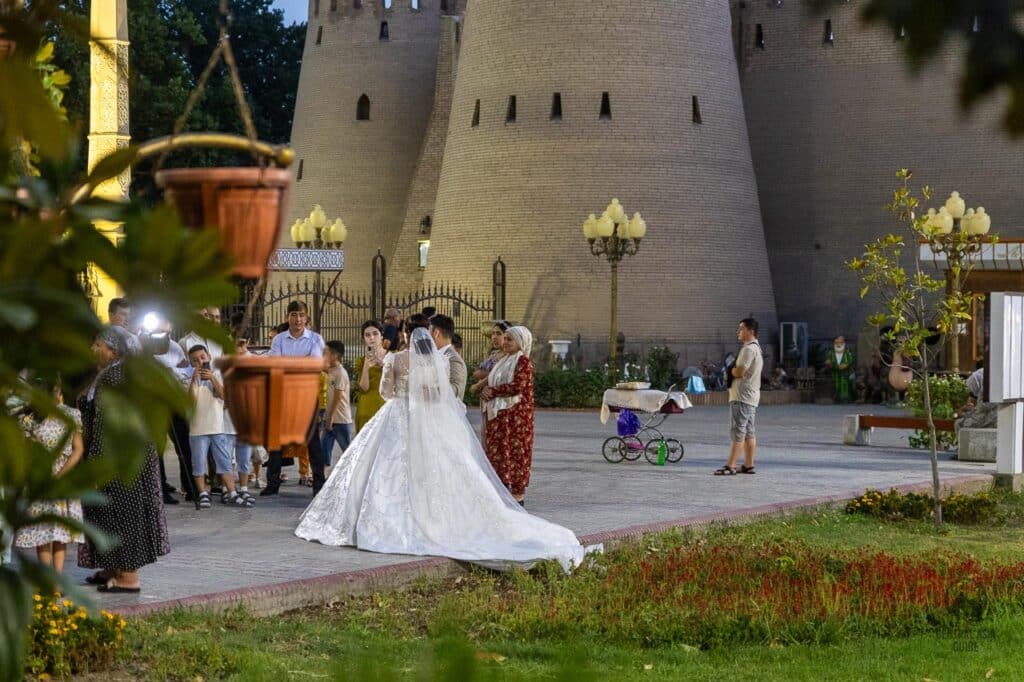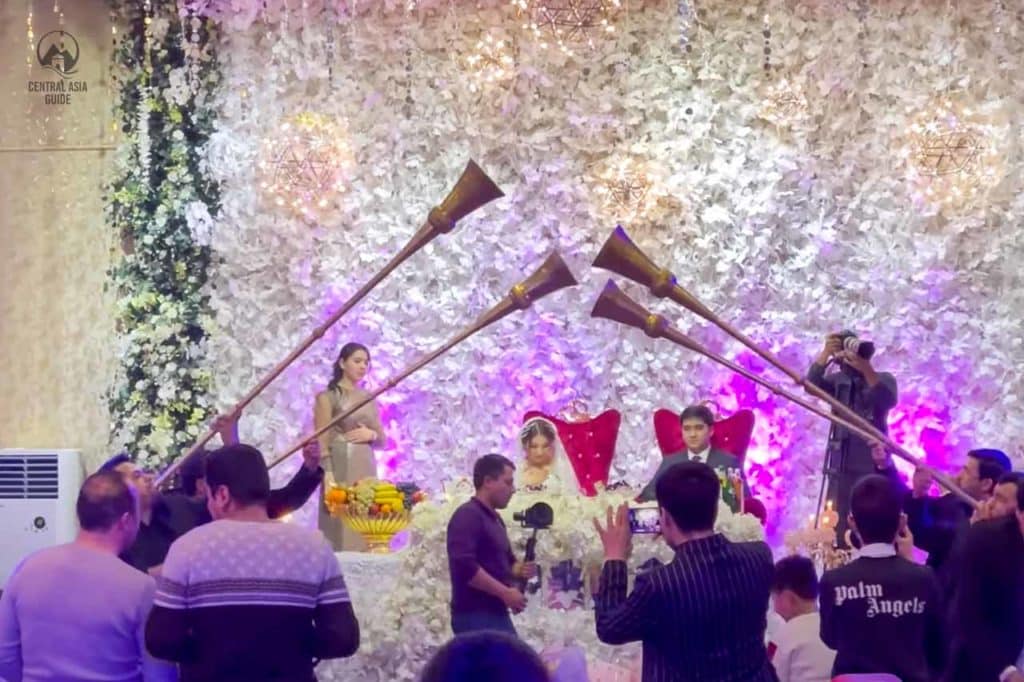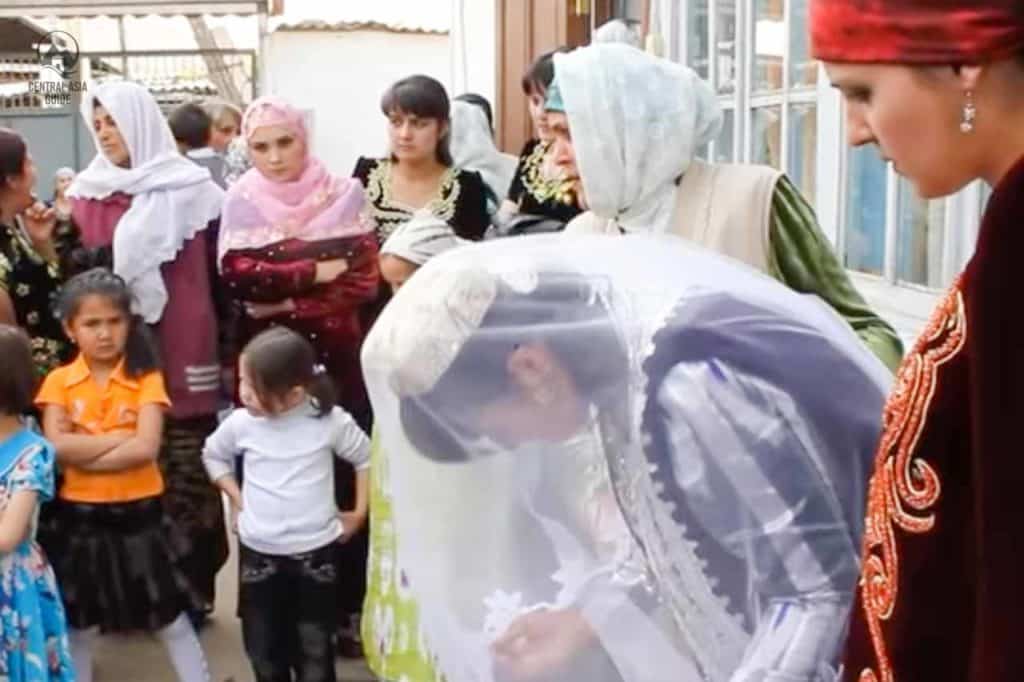Tajik wedding
Wedding Celebration in Tajikistan
Tajik wedding is a multi-day celebration that involves a variety of traditional customs and rituals. These weddings are typically large and festive events, with hundreds of guests in attendance. The weddings in Tajikistan show the deep importance placed on family, community, and tradition in Tajik society. It is one of the celebrations for families and friends to come together to celebrate the union of the couple and to wish them a happy and prosperous future together. The wedding process in Tajikistan often takes several steps and may place over the course of several months. A general overview of the process of the traditional Tajik wedding includes: matchmaking, engagement, nikah, kalym and the main one is the big wedding day.


Tajik Matchmaking
Traditional matchmaking is still a common practice In Tajikistan, especially in rural areas. The process involves several steps and is overseen by a matchmaker, who is usually an older and respected member of the community.
Firstly, the matchmaking process is for the matchmaker to identify potential partners who are compatible based on factors such as age, social status, and family background. The matchmaker may approach the families of eligible candidates and inquire about their interest in the marriage proposal. Secondly, if both families express interest, it is for the families to meet and discuss the proposal in more detail. This may involve several meetings, during which the families may exchange gifts and ask questions about each other’s backgrounds, values, and expectations.
Next, if both families agree to the match, the couple may be allowed to meet and get to know each other better under the supervision of family members. In some cases, the couple may be allowed to spend time alone together, but this is usually only after the families have established a level of trust and familiarity with each other. Moreover, if the couple decides to proceed with the marriage, the next step is to arrange the wedding ceremony. This involves several days of festivities, during which the families and the community come together to celebrate the union of the couple.
The matchmaking process in Tajikistan is a complex and complicated process that shows the deep importance placed on family and community ties in Tajik society. Although the matchmaking process may vary depending on the region and the families involved, it is generally seen as a way to ensure the long-term stability and happiness of the couple and their families.
Tajik Engagement
The engagement ceremony is often held several months before the wedding and involves a formal announcement of the couple’s intention to get married. The engagement process begins with a proposal from the groom or his family to the bride’s family.
If the proposal is accepted, the two families will typically meet to discuss the details of the engagement and the upcoming wedding. This may involve the exchange of gifts and the negotiation of the Kalym, or dowry payment. Sometimes, the engagement can be a simple private ceremony, while in other cases it may be a larger, public event involving family and friends.
Tajik Nikah ceremony
The nikah ceremony is one of the most important parts of the wedding, it is the Islamic wedding ceremony. The nikah ceremony is typically officiated by an Islamic religious leader, such as an imam or a mullah. During the nikah ceremony, the couple and their witnesses will sign a marriage contract, which outlines the rights and responsibilities of each partner in the marriage.
The imam or mullah will then lead the couple through a series of Islamic rituals, including recitation of prayers and verses from the Quran, and may offer a sermon on the importance of marriage in Islam. After the nikah ceremony is complete, the couple is considered legally married in the eyes of Islam and is expected to begin their married life together. The couple and their families may then celebrate with a wedding feast or other festivities.
Tajik Kalym (Dowry)
Kalym ( a dowry) is a traditional practice of giving a gift or payment from the groom or his family to the bride’s family as part of the wedding ceremony. The Kalym serves as a symbol of respect and gratitude to the bride’s family for raising and nurturing their daughter, and also serves to establish a bond of trust and mutual respect between the two families. The Kalym can be in many forms, but it typically involves the exchange of money or valuable goods. The amount of Kalym is usually negotiated between the families prior to the wedding and may vary depending on factors such as the social status of the families, the financial situation of the groom, and the value placed on the bride in her community.
In Tajikistan, it is customary for the Kalym to be presented to the bride’s parents during the wedding ceremony. The groom or his representative will often deliver the Kalym in a public ceremony, and the bride’s parents will accept the gift on behalf of their daughter. To its symbolic importance, the Kalym also serves a practical purpose in Tajik society. It can help to ensure the financial security of the bride in the event of divorce or the death of the groom, and can also help to establish a sense of responsibility and commitment on the part of the groom towards his new family.
Tajik Wedding Feast
The wedding feast is the main event of the entire wedding process. It is a large and festive celebration that can last for several days. The feast is usually held after the nikah ceremony and may take place in a special celebratory hall or in the family’s home if the party is smaller.

The wedding feast means a large amount of food, including traditional Tajik dishes such as plov, shurbo, and a variety of meat dishes as well as fruits, nuts, and sweets, and there may be a large wedding cake or another dessert.
Apart from the food, the wedding feast includes music, dancing, and other entertainment options. The bride and groom be seated on a special stage or dais, and guests may take turns congratulating them and presenting them with gifts. During the wedding feast, it is common for the families of the bride and groom to give speeches and toasts, expressing their joy and gratitude for the union of the couple. There may also be traditional rituals or customs, such as the throwing of candy or money to children, or the breaking of a plate or other object to bring good luck to the couple.
Tajik Bridal Show in grooms house
The wedding ceremony does not end here. Starting the next day after the wedding feast, guests begin to come to the newlyweds’ house from early in the morning till the evening. The bride has to greet each guest who comes with gifts. She must bow three times to each guest as she receives their gifts, and in return, give a small gift such as scarves.
The purpose of this visit is that the guests to see the new bride and evaluate her cooking, as well as her hospitality skills as well as the bride’s suitability as a wife, and to demonstrate her worthiness to marry into the family.
Bride rituals and customs in Tajikistan
During a traditional Tajik wedding, there are some rituals and customs that the bride may participate in. One of the common ones are the bride bows, veiling, blessing and many more. These rituals and customs are meant to symbolize the bride’s respect for her family and community, as well as her readiness to enter into married life. They are one of the important part of the wedding celebration in Tajikistan, and considered the deep cultural and religious traditions of the country.
Bride's bowing
In some regions of Tajikistan, the bride might be required to bow to her parents and the groom’s parents, elders, and other members of the community as a sign of respect and humility.
The bows are to the new relatives and the elderly guest during the main wedding day as well as after the wedding ceremony. The first bowing is typically accompanied by the giving of gifts or the offering of prayers.
Veiling
In some regions of Tajikistan, the bride may be veiled during the wedding ceremony, with only her eyes and hands visible to the guests. This is meant to symbolize the bride’s modesty and purity.

Blessing
The bride may be blessed by her parents and other elders before and after the wedding, with prayers and wishes for a happy and prosperous marriage.
Law restricting big wedding celebrations in Tajikistan
In 2017, Tajikistan’s president introduced a law that restricts the size of public celebrations, including weddings. The law was introduced aimed at limiting the costs associated with such events, which can often be a financial burden on families. Under the law, weddings and other celebrations can only be held on weekends, and only between the hours of 9 am and 11 pm. The number of guests that can attend is also limited to 200 people, and only close family members and friends are allowed to participate in the festivities. The law also bans the use of loudspeakers, music, and fireworks at such events.
The law has been controversial in Tajikistan, with some people arguing that it infringes on their cultural traditions and freedom of expression. However, others see it as a necessary step to curb excessive spending on weddings and other celebrations, which can lead to financial hardship for families.
See also Uzbek and Kyrgyz weddings
Page updated: 4.3.2023